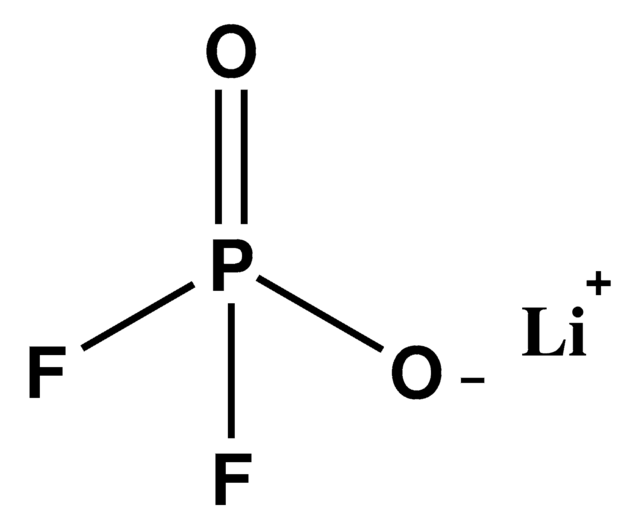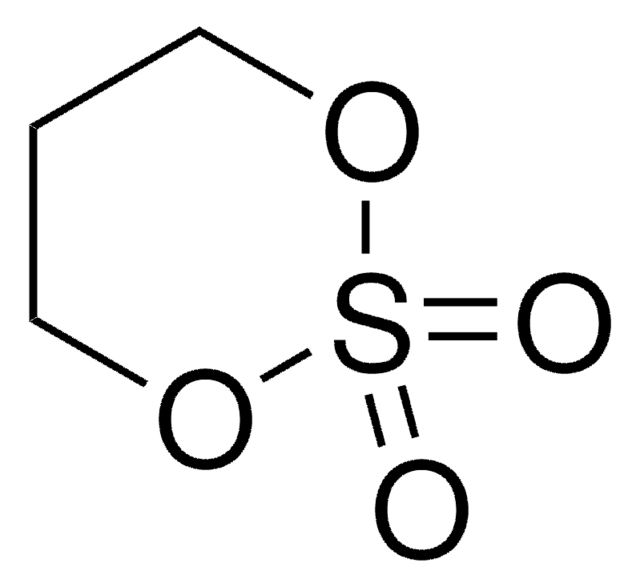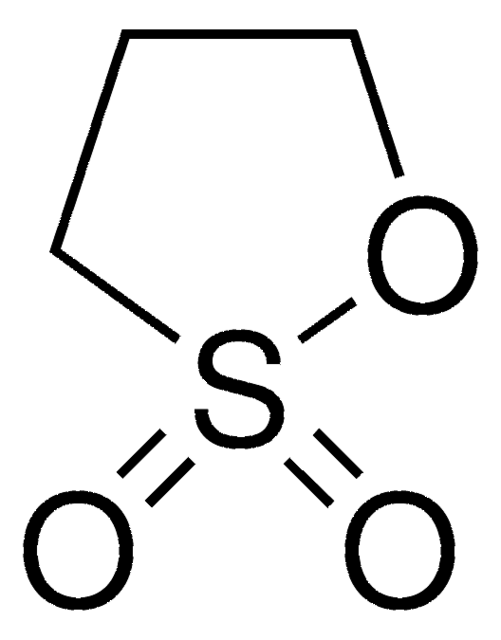935646
Ethylene sulfate

≥99%, anhydrous, battery grade
Synonym(s):
1,3,2-Dioxathiolane 2,2-dioxide, DTD
About This Item
Recommended Products
grade
anhydrous
battery grade
Quality Level
Assay
≥99%
form
powder
greener alternative product characteristics
Design for Energy Efficiency
Learn more about the Principles of Green Chemistry.
sustainability
Greener Alternative Product
impurities
≤750 ppm (H2O)
bp
231 °C
mp
95-97 °C (lit.)
application(s)
battery manufacturing
greener alternative category
storage temp.
2-8°C
SMILES string
O=S1(=O)OCCO1
InChI
1S/C2H4O4S/c3-7(4)5-1-2-6-7/h1-2H2
InChI key
ZPFAVCIQZKRBGF-UHFFFAOYSA-N
Looking for similar products? Visit Product Comparison Guide
General description
Application
related product
Signal Word
Danger
Hazard Statements
Precautionary Statements
Hazard Classifications
Acute Tox. 4 Oral - Carc. 2 - Eye Dam. 1 - Skin Corr. 1B - Skin Sens. 1B
Storage Class Code
8A - Combustible corrosive hazardous materials
WGK
WGK 3
Flash Point(F)
Not applicable
Flash Point(C)
Not applicable
Regulatory Listings
Regulatory Listings are mainly provided for chemical products. Only limited information can be provided here for non-chemical products. No entry means none of the components are listed. It is the user’s obligation to ensure the safe and legal use of the product.
JAN Code
935646-VAR:
935646-BULK:
935646-25G:
Certificates of Analysis (COA)
Search for Certificates of Analysis (COA) by entering the products Lot/Batch Number. Lot and Batch Numbers can be found on a product’s label following the words ‘Lot’ or ‘Batch’.
Already Own This Product?
Find documentation for the products that you have recently purchased in the Document Library.
Our team of scientists has experience in all areas of research including Life Science, Material Science, Chemical Synthesis, Chromatography, Analytical and many others.
Contact Technical Service










